The Art of Resiliency
Re:Growth exhibit stretches Riverside Park
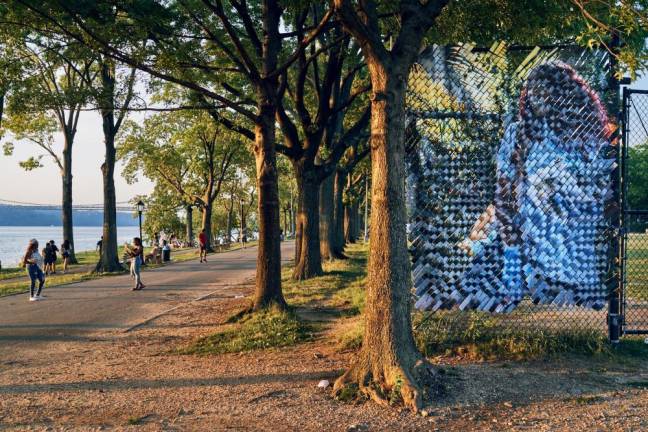
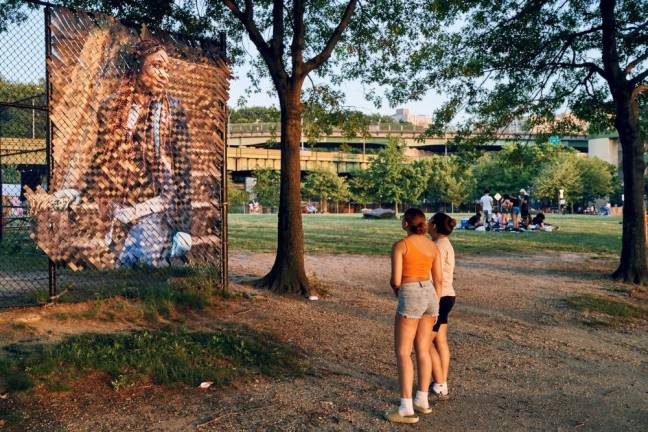
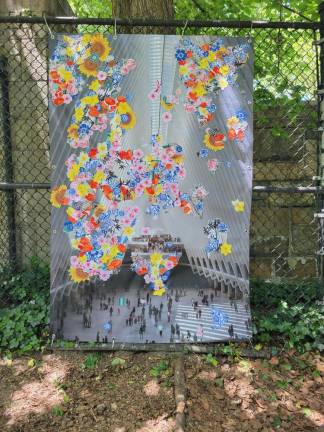
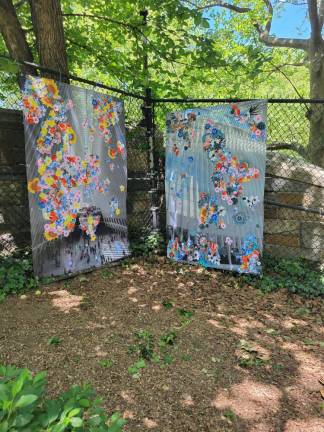
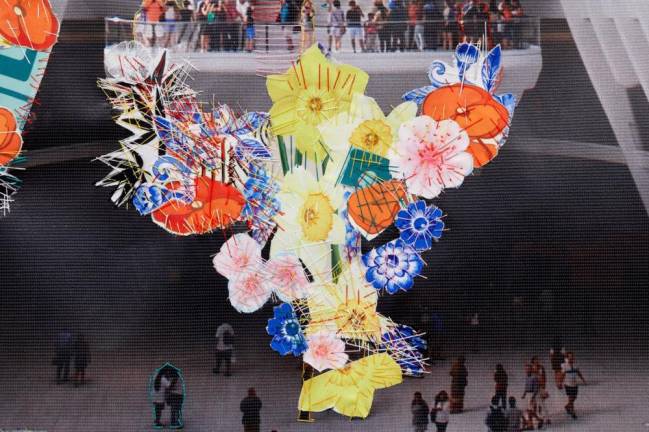
Commemorating painful moments is crucial to a collective sense of resiliency, according to Jersey City-based artist WOOLPUNK®, whose works featuring images of the Oculus in Downtown Manhattan — near where the Twin Towers once stood — are currently on display in Riverside Park between West 96th Street and West 97th Street. The images, which WOOLPUNK® made into banners featuring hand-stitched embellishments, are part of an exhibit titled “Re:Growth” that has taken over the park this summer.
“It’s a good time to remember the people who have passed, it’s a good time to remember the families that are still suffering,” she said, referencing the upcoming 20-year anniversary of 9/11, “and it’s a good time to remember that New York is a city that survives.”
The “Re:Growth” exhibit, curated by Karin Bravin and free to the public in celebration of the Riverside Park Conservancy’s 35th anniversary, will remain in the park through the beginning of September. Works from 24 artists are installed from West 64th Street to West 151st Street; photographs are woven through chain-link fences and augmented reality images are viewable in the Hudson River. With guidance from the Riverside Park Conservancy and the New York City Department of Parks and Recreation, it’s Bravin’s second go at curating an exhibit in the Upper West Side park — and the largest so far, according to Riverside Park Conservancy President and CEO, Dan Garodnick.
“We want Riverside Park to be an innovative space, an inspiring space,” Garodnick said, “and this was a great project for this moment.”
Forging Ways Forward
Bravin’s first exhibit in Riverside Park 15 years ago was titled “Studio In The Park.” This time around, she settled on a narrower unifying concept while scouting for artists to participate. Still, she views the present-day theme as allowing artists to address a variety of topics from different perspectives.
“I was sort of feeling the theme of regrowth,” Bravin said. “Of regrowth after the pandemic, of regrowth as winter turns to spring, of regrowth in terms of political unity for our country.”
In Garodnick’s eyes, the theme speaks particularly well to the city’s ongoing recuperation in the wake of COVID-19. Every component of the exhibit needed to be approved by the Department of Parks and Recreation, he said, and the Conservancy aided Bravin each step of the way.
Far-Reaching Roots
While preparing for the exhibit, Bravin and the artists paid special attention to how each work would inhabit its unique location.
For WOOLPUNK®, the criteria was, in part, aesthetic; she desired an area of the park in which direct sunlight wouldn’t shine through her two banners, which she felt would “distract” viewers. On a more conceptual level, she views the setup — in a corner near Dinosaur Playground — as speaking to broader concepts of memorials for those lost in 9/11 and the many familial relationships shaped by the attacks. “I think art can heal and it can help bring out conversation,” WOOLPUNK® said. “And it can make people reflect on things that maybe just stayed below the surface for a really long time.”
She refers to some of the flowers stitched onto the banners as “ghost flowers;” in their translucency, the vinyl floral additions are meant to represent those who died nearly 20 years ago.
The exhibit also connects the country’s coasts through works contributed by Los Angeles-based photographer and artist Glen Wilson. His pieces — two double-sided photographs of postal workers and “biker kids” cut into long strips and then woven through chain-link fencing at the West 146th Street baseball field — link Harlem with Venice Beach, California, by speaking to communities in both locales. “Embroidered into my personal interest in celebrating these everyday people is a conversation about diverse neighborhoods, diverse opportunities,” Wilson said, “stable middle class and the role of civic service.”
Working for the United States Postal Service, he added, has long provided a “pathway for stability and mobility” for Black communities. His portraits of the two postal workers are on display near where Wilson originally photographed one of the women; the other was shot in Los Angeles.
The Fruits Of Their Labor
The outdoor setting of “Re:Growth” boasts the added benefit of increased accessibility, according to Garodnick. Park-goers can reach out to touch WOOLPUNK®’s art if they so choose, a form of interaction that is traditionally discouraged in more formal museum or gallery settings. “No alarm was going to go off,” she said. “There wasn’t tape keeping people from it.”
WOOLPUNK® spent three months completing her works for the exhibit and noted that the public display comes at a moment when she feels that people need a glimpse of life without “barriers.” Wilson similarly found joy in the “direct engagement” fostered with park-goers, who asked questions pertaining to his work as he installed the two large weavings.
Since installations stretch the majority of the park, people from any of the surrounding neighborhoods can view art close to home. “We wanted to make sure that there was a surprise waiting for you,” Garodnick said, “at any turn.”
“We want Riverside Park to be an innovative space, an inspiring space, and this was a great project for this moment.” Riverside Park Conservancy CEO and President Dan Garodnick